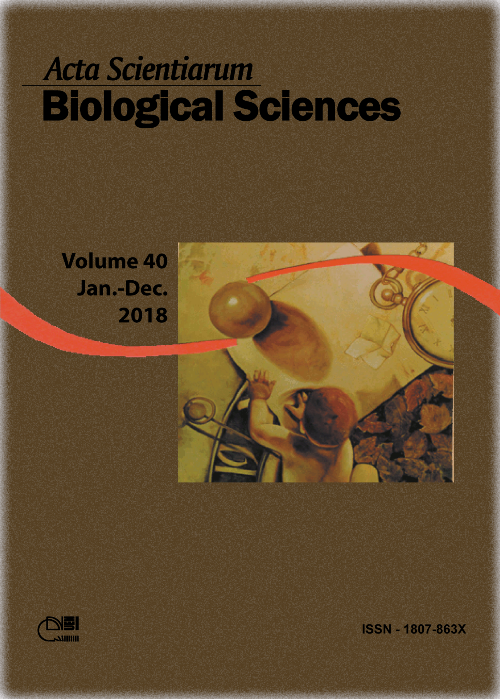<b>Larvicidal, cytotoxic and genotoxic effects of aqueous leaf extract of <i>Jatropha mollissima</i> (Pohl) Baill
Resumo
The present study aimed to evaluate the larvicidal effect of aqueous leaf extract from Jatropha mollissima on the larvae of Aedes aegypti and analyze its cytotoxic and genotoxic activity in the Allium cepa test. Larvae of the mosquito were exposed to the negative and positive controls (distilled water and diflubenzuron, 0.003 mg mL-1, respectively) and to leaf extract concentrations of 0.001, 0.005, 0.01, 0.02, 0.04, 0.06, 0.08 and 0.1 mg mL-1. The mortality rate was evaluated every 24 hours over five days. For the cytotoxic and genotoxic analyses, roots of A. cepa were exposed to the negative (distilled water) and positive control (trifluralin, 0.84 ppm) and to different leaf extract concentrations (0.01, 0.1, 1 and 10 mg mL-1) for 24 hours. The statistical analyses were performed by Kruskal-Wallis test (p < 0.05). The leaf extract presented promising larvicidal activity at the concentrations of 0.08 and 0.1 mg mL-1, and none of the concentrations evaluated in A. cepa exhibited cytotoxic or genotoxic effect. Since the larvicidal action of J. mollissima and the absence of cellular toxicity have been demonstrated, further studies are recommended to determine the mechanism of action of the extract as a possible natural larvicide.
Downloads
DECLARAÇÃO DE ORIGINALIDADE E DIREITOS AUTORAIS
Declaro que o presente artigo é original, não tendo sido submetido à publicação em qualquer outro periódico nacional ou internacional, quer seja em parte ou em sua totalidade.
Os direitos autorais pertencem exclusivamente aos autores. Os direitos de licenciamento utilizados pelo periódico é a licença Creative Commons Attribution 4.0 (CC BY 4.0): são permitidos o compartilhamento (cópia e distribuição do material em qualqer meio ou formato) e adaptação (remix, transformação e criação de material a partir do conteúdo assim licenciado para quaisquer fins, inclusive comerciais.
Recomenda-se a leitura desse link para maiores informações sobre o tema: fornecimento de créditos e referências de forma correta, entre outros detalhes cruciais para uso adequado do material licenciado.












1.png)




3.png)













